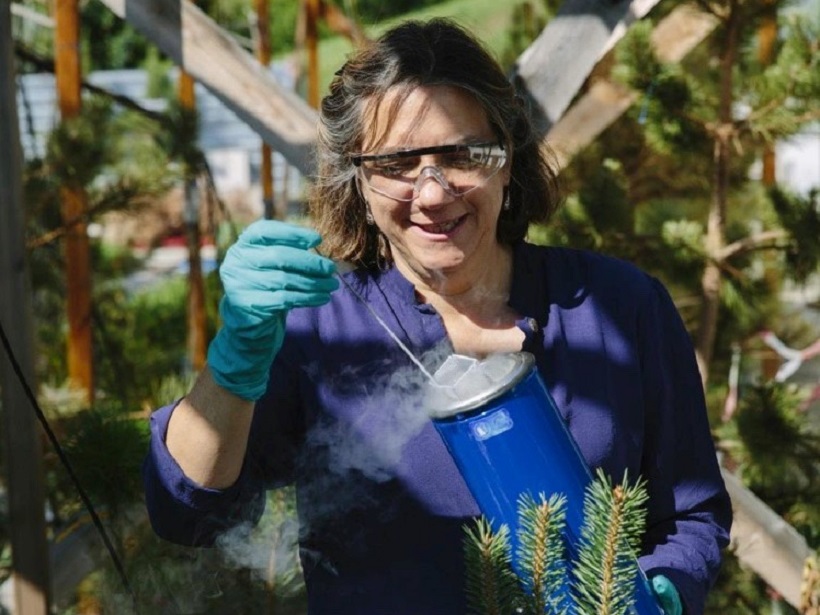Global Biogeochemical Cycles (GBC) published its first issue in 1987, at a time when world population had just passed five billion, atmospheric carbon dioxide concentrations were around 350 parts per million, and scientists were debating how soon the expected signals of global warming could be detected with confidence. The Intergovernmental Panel on Climate Change was founded the following year.
During the preceding decades, the key role of biota in element cycling and regulations of atmospheric greenhouse gases was widely recognized and the ‘bio’ prefix was joined to ‘geochemistry’. It was already clear that human fixation of nitrogen and mining of phosphorous were large enough to match or even exceed natural nitrogen fixation and weathering supplies of these elements. The local consequences of increased nutrient supplies, such as eutrophication, were clear but longer term and broader consequences of changes were still debated.
Thirty years ago, AGU launched GBC with the mission stated by its first editor in chief, Jim McCarthy, to publish “…original scientific contributions of an interdisciplinary nature which explore the interfaces between the marine, atmospheric, geological and biological sciences.” This mission was amplified by its second editor in chief, Karl Turekian: “GBC will be the vehicle for the publication of important research in all aspects of global environmental change…” A special issue on methane in 1988 exemplified the breadth of disciplines required, and the attempt by Cicerone and Oremland [1988] in that issue to produce a global methane budget became one of the journal’s most cited papers.
Continuing with the terms of subsequent editors in chief—Jorge Sarmiento, Bill Reeburgh, Meinrat Andreae, and Eric Sundquist—Global Biogeochemical Cycles built a reputation as one of AGU’s most respected journals, documenting changes in global biogeochemical cycles over timescales ranging from the Anthropocene to the early Earth.
GBC has one of AGU’s higher impact factors, and ranks consistently among the top 15 among multidisciplinary geoscience, meteorology and atmospheric science, and environmental science journals. Although the topic is arguably of increasing relevance, GBC’s publication rate has remained at roughly 100 to 120 papers per year for the past decade. A proliferation of journals over the same period devoted to biogeochemical and ecological aspects of global change mean that papers that were formerly only found in GBC are now regularly published elsewhere.
Thirty years after GBC’s first issue, we accept that we are living with climate change. Population has exceeded 7.5 billion, and carbon dioxide levels have passed 400 parts per million. Yet we still struggle to answer questions posed in early issues of GBC. For example, mass balance of atmospheric carbon dioxide informs us of an increasing land sink in the last decades, but the underlying mechanisms remain hotly debated. For reasons not yet fully explained, the rate of atmospheric methane increase slowed in the early 1990s, paused for a decade, and now has resumed increasing. Mysteries linking the covariation of past climate, greenhouse gases and biogeochemical cycles remain unsolved. These uncertainties, coupled with clear evidence of human susceptibility to the impacts of climate variability and change, increase the urgency for quantifying feedbacks between biogeochemical cycles and climate. There will be many papers for GBC to publish in the next decades.
My own service as editor in chief of the journal is nearing its end. Over the past four years, we have tried to encourage more papers dealing with quantifying human contributions to biogeochemical cycles, for example through a special issue on global land use change. My time at GBC has been an incredibly rewarding experience. I am grateful to my co-editors, Mary-Elena Carr and Sara Mikaloff-Fletcher, and our group of associate editors for their support. The dedication and excellence of AGU staff and their goodwill and patience is remarkable. However, most inspiring for me has been the generosity of reviewers to share their expertise to help improve the papers we publish. Finally, my best wishes to Peter Raymond, the incoming editor in chief.
—Susan Trumbore, Editor in Chief, Global Biogeochemical Cycles, and Max Planck Institute for Biogeochemistry, Germany; email: [email protected]
Citation:
Trumbore, S. (2017), Thirty years of GBC in a changing world, Eos, 98, https://doi.org/10.1029/2018EO087347. Published on 06 December 2017.
Text © 2017. The authors. CC BY-NC-ND 3.0
Except where otherwise noted, images are subject to copyright. Any reuse without express permission from the copyright owner is prohibited.

